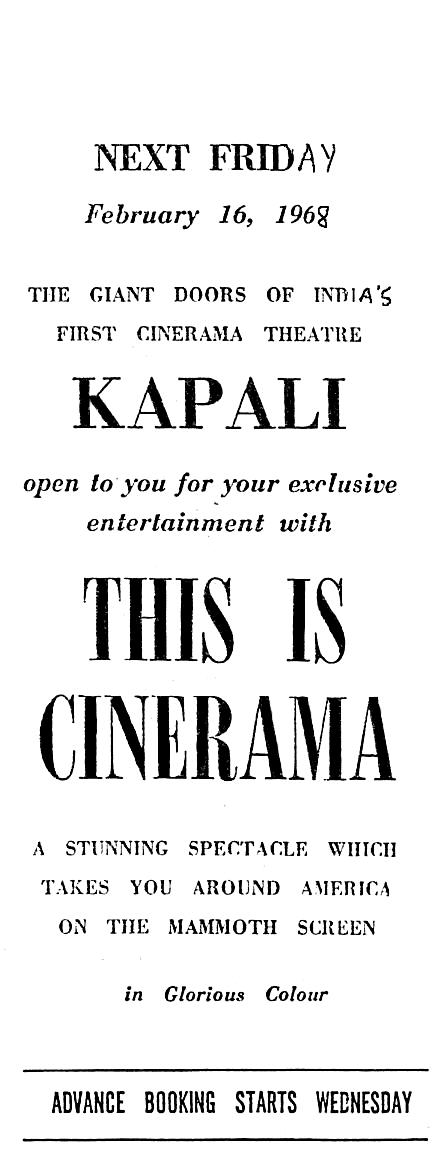Cinerama theatres in India, Pakistan, Sri Lanka
Part 3 of 'CinemaScope films in Bangladesh, India, Nepal, Pakistan, Sri Lanka'
Cinerama theatres in India, Pakistan, Sri Lanka

Cinerama was a 3-strip, three-projector technology. Each 35 mm projector ran one third of the image, which was projected on a screen that had a 146° arc, and was much bigger than the 70mm widescreen. How the West Was Won (1962) is the most famous Cinerama feature ever, followed in popularity by an entertaining documentary ‘This is Cinerama’ (1952).
Like Imax after it, 3-Strip Cinerama concentrated on documentary films and only two features were ever made. The other feature, The Wonderful World of the Brothers Grimm (1962)was a biopic.
In 1965 a trial screening of the Cinerama print of How the West Was Won in New Delhi was not successful, with the three projectors not synchronising.
On 16 February 1968, Bangalore got India’s first Cinerama theatre, Kapali. It had a louvered 84ft by 32ft screen, and 1,500 seats, almost one and a half times as many as at Delhi’s biggest, Shiela. Kapali first screened This is Cinerama and then Seven Wonders of the World.
Karachi’s Capri opened five months later, on 26 July 1968, with a 35mm film projected on its 70ft by 30ft Perlux screen. An international register of Cinerama theatres notes that ‘no known Cinerama presentations’ were screened at Capri. [1]
The only other Cinerama theatre in South Asia was Colombo’s New Theatre, about which the same authority has no further details. Many countries around the world never constructed a Cinerama theatre, and many just one each.
The cumbersome three-projector Cinerama gave way to single-film 70 mm Cinerama. It's a Mad, Mad, Mad, Mad World (1963), which was filmed in Ultra Panavision 70, was the first of the lot, and a commercial success. A number of successful films were filmed in Ultra Panavision 70, but projected instead on normal widescreens made for 70 mm. Slowly this technology, too, disappeared.
